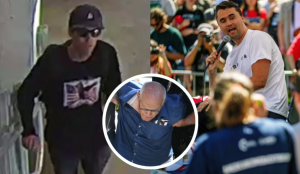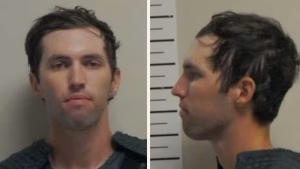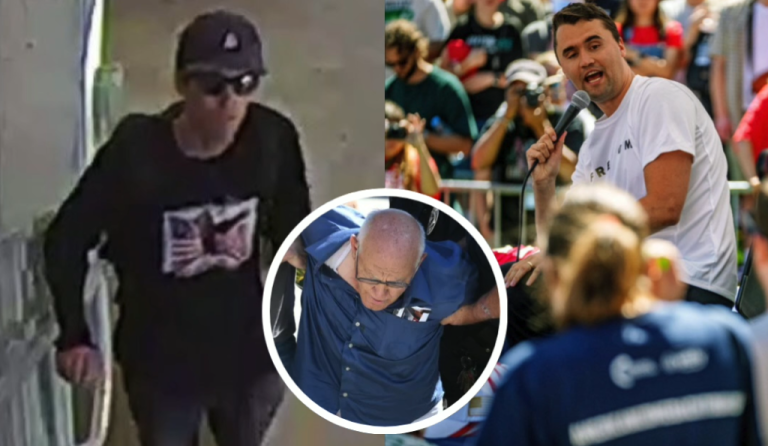
NOTE:VIDEO AT THE END OF ARTICLE.
Dannion Brinkley’s Near‑Death Experience: A Profound Exploration of Life Beyond the Physical Realm
Few individuals have contemplated what might lie beyond our mortal existence quite like Dannion Brinkley. A former U.S. Marine whose life was forever changed by a near‑fatal lightning strike in 1975, Brinkley has provided one of the most compelling personal accounts of encountering the boundaries between life and death. His extraordinary experiences—including being clinically dead for 28 minutes and enduring subsequent close calls during major heart and brain surgeries—offer unique insights into the nature of consciousness and what may await us after physical demise. In this comprehensive analysis, we examine Brinkley’s near‑death experiences, the life‑affirming lessons he has drawn from them, and how his story contributes to our understanding of mortality and existence beyond the physical world.
I. An Unforgettable Turning Point: The Lightning Strike of 1975
A. A Fateful Encounter with Nature
On September 17, 1975, Dannion Brinkley experienced an event that would alter his life’s course in ways that defy ordinary explanation. During an unassuming phone conversation, a lightning bolt struck Brinkley—an event so statistically unlikely that the Centers for Disease Control and Prevention estimate the odds are less than one in a million in any given year. Yet, for Brinkley, that day marked the beginning of a journey into realms beyond the physical.
Brinkley vividly recalls the impact of the lightning strike: the electrical bolt entered through the side of his head, just above his ear, coursed along his spine, and even fused his shoe nails to the ground. Amid the raw intensity of the experience, he described a moment of surreal sensory overload—heat, blinding light, and an abrupt force that hurled him through the air. In the ensuing chaos, as his body succumbed to the shock and was declared clinically dead, a remarkable transformation began.
B. Beyond the Threshold of Life
Although Brinkley’s physical body was rendered unresponsive for a staggering 28 minutes, that period of clinical death marked a profound transformation that extended far beyond the limits of modern medicine’s understanding. In what he describes as a consciousness that temporarily left his physical form, Brinkley experienced what can only be characterized as a journey into the afterlife. Floating outside his body, he was able to observe the unfolding events around him—from seeing the hospital staff working frantically on the gurney to feeling detached yet deeply aware of the life he was on the brink of losing.
What distinguishes Brinkley’s account is not merely its vividness but also its transformative quality. In that brief interlude between life and death, he claims to have traversed a tunnel-like space—a corridor of darkness leading toward a luminous, transcendent light. This passage, which he refers to as entering a “Crystal City,” provided him with a panoramic, second‑person perspective on his own existence. He witnessed memories, pivotal life moments, and the cumulative impact of his actions, all unfolding in a display that challenged conventional understandings of time and space.
II. The Anatomy of a Near‑Death Experience
A. Detaching from the Physical Self
One of the central themes in Brinkley’s near‑death narrative is his description of consciousness separating from his physical body. As the lightning struck, he reports feeling an intense dislocation—a sense of being torn away from the confines of the flesh. In what he characterizes as emerging from a “blank void,” his consciousness drifted upward, granting him an unobstructed view of his own body lying motionless on a hospital gurney. This disembodied experience, though disconcerting, provided a unique vantage point that allowed him to reflect on the entirety of his life with an almost detached clarity.
Such out‑of‑body experiences have been frequently reported by individuals who have encountered the threshold of death. While scientific explanations often point to neurochemical reactions in the dying brain, the subjective, transformative quality of these experiences—as exemplified by Brinkley—continues to evoke both wonder and debate among researchers and spiritual seekers alike.
B. The Luminous Tunnel and the Encounter with the Divine
Perhaps the most striking segment of Brinkley’s recount is his description of traveling through a tunnel of light. As his consciousness moved forward along this tunnel, it was inexorably drawn toward a brilliant, radiant light that began to coalesce into an entity unlike any he had witnessed before—a spiritual being composed entirely of light. Brinkley likens this ethereal presence to an angelic guide, radiating warmth, compassion, and an overwhelming sense of peace.
This encounter took place in what Brinkley terms a “Crystal City”—an awe‑inspiring realm filled with vibrant hues and transcendent beauty. In this realm, he experienced a panoramic replay of his life, viewing his actions, choices, and their consequences from a perspective that allowed for profound introspection. This life review, not bound by the linear progression of time, provided Brinkley with critical insights into his own journey and the legacy he had been leaving behind.
C. Recurrent Encounters with Life’s Edge
Brinkley’s encounter with death was not an isolated incident. Over the subsequent years, he experienced two additional near‑death episodes—once during open‑heart surgery in 1989 and again while undergoing brain surgery. Each of these encounters reinforced his perception that death may not represent an absolute end, but rather a transitional phase that we cross before entering a new state of consciousness. These repeated experiences have profoundly influenced his personal philosophy and underpinned his dedication to sharing the insights he has gathered.
During his heart surgery, for example, Brinkley described a reunion with what he later characterized as “angelic guides”—spiritual entities that provided reassurance and wisdom during one of the most vulnerable moments of his life. These experiences have fueled his ongoing commitment to help others confront the fear of death, offering solace and understanding to those facing life‑threatening situations.






